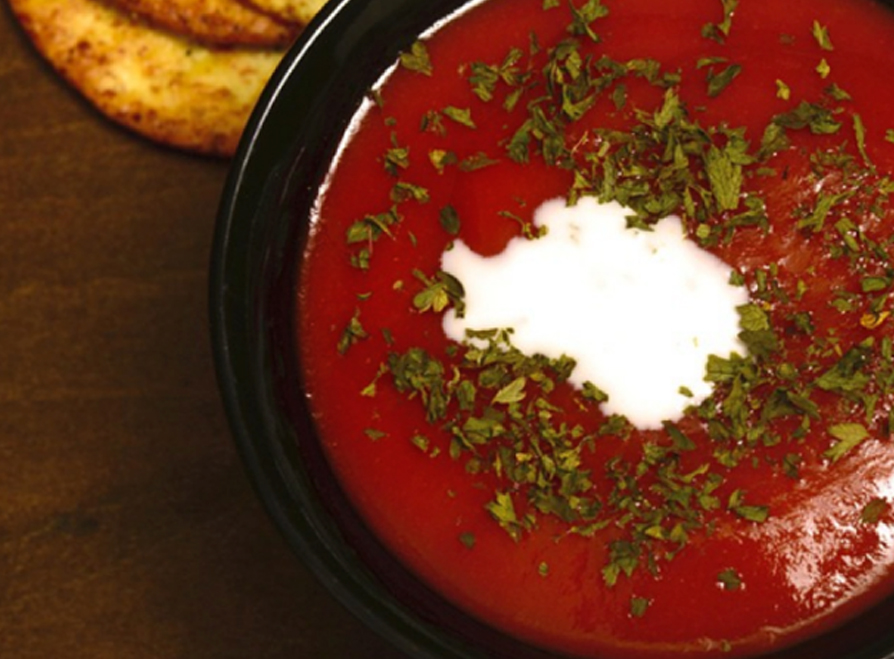
Hands up, who think that pizza is a perfect dish! You’re not alone. Although the first pizzas were made in the hot ovens of Napoli already in the 10th century, this crispy and savoury pastry with melted cheese has become one of the most loved dishes in the world. Despite the fact that pizza is mostly known as a popular takeaway fast food, we believe that anyone can try making a genuine Italian pizza at home. Today we’ll look at 7 tips to follow if you want your pizza-making to succeed.
1. Season the pizza dough with a sufficient amount of salt
Without enough salt flour doesn’t have much taste. And since this is the main ingredient of the dough, a good pizza chef is obliged to season the dough properly. Often home cooks don’t season the dough enough for they think that pizza topping is more important than the dough. However, here comes an important rule – if your pizza topping includes salty components, such as anchovies, olives, Parmesan cheese or cured Italian meat products (salami, Prosciutto, Pancetta etc.), you can hold back the salt.
2. Don’t use a rolling pin to roll your dough
Professional pizza-makers can fly their pizza dough high up in the air whey forming it, and this is a separate cooking sport that’s a pleasure for an eye, too. Luckily, flying the dough is not a vital skill in pizza-making. Instead you should check that no rolling pin is used when forming the dough because rolling breaks the little air bubbles in the dough and when the bubbles pop, the dough becomes too stiff. Replace the rolling pin with your hands, stretch the dough gently with your fingertips until the dough is in the size of the desired pizza base. Keep in mind that your pizza doesn’t need to be in the shape of a perfect circle, it can be oval instead. Or square. You decide!
NB! If processing the dough seems too complicated (e.g. the dough takes back its original form when you stretch it), it is often because you’ve over processed it or it’s simply too cold. If so, let the dough sit for 15 minutes in room temperature. This helps the gluten in the dough calm down and the dough can warm up. Try again after 15 minutes.
3. Make your own tomato sauce
If you’ve already made your own dough, it’s obviously a good idea to stick to the plan of doing everything yourself and make your pizza sauce from scratch. Actually, it’s easier to make the sauce than it is to make pizza dough, and no doubt, self-made sauce tastes better too. To make a simple homemade pizza sauce, you only need a tin of chopped tomatoes that’s been added some garlic, basil, salt and pepper. You can even take a shortcut and prepare the sauce in a blender where you can liquidize tomato, garlic and (fresh) basil. (If you wish, you can also add your pizza sauce some anchovies.) In addition to that, making your pizza sauce at home, gives you an opportunity to use your favourite cheese in the sauce. This privilege is something we definitely recommend while making your pizza at home.
4. Less is more
To have an excellent pizza experience, we recommend not piling up dozens of ingredients on your pizza. Instead we recommend not to make your pizza a meat-lovers dream by using ten different types of sausages and ham. Firstly, such rich pizzas need a tough base and a very hot oven. Secondly, classic pizzas are charming exactly because of their simplicity! Pick two or three components that complement each other and let the crispy crust shine, too.
Often a tasty pizza asks only for one quality ham or sausage that’s added to accompany the tomato sauce and cheese. Certainly, Margherita that is made of only tomato sauce, mozzarella and fresh basil, is a timeless classic. Other common topping combinations include Prosciutto-rocket salad, Prosciutto-champignons, anchovies-capers-olives or combinations of different vegetables (grilled bell pepper, aubergine, zucchini, artichoke hearts, spinach, etc.). You choose!
NB! Don’t put too much cheese on your pizza! Too much cheese makes the pizza too greasy and difficult to handle.
5. Don’t use baking paper
Dedicated pizza-makers can even purchase a pizza stone that is meant for making pizzas with a crispy crust at home. However, this investment is not that important since you can also get a decent result when making your pizza on a baking sheet that’s been previously processed with a droplet of cooking oil. Just like you’d preheat and grease the pizza stone, you can do the same with the baking sheet. The oil put on the baking sheet helps to fry the pizza base and make the crust crispy, just like all pizza lovers like it. When it comes to baking paper, then experiences pizza-makers say you should store it away. They say that it’s important that the dough is in direct contact with the heat, which in our case is the baking sheet. Baking paper would be the undesired barrier between the dough and the baking sheet that wouldn’t let the heat spread and that would keep the pleasant crust from forming.
6. Weigh your pizza before pre-cooking
Dependent on the toppings, you may need to pre-cook your pizza. This may become necessary if your pizza topping includes moist or wet components, e.g. fresh mozzarella or some (preserved) vegetables. In this case the moist topping can make the dough soggy. Pre-cooking the base guarantees that it cooks with the topping and becomes crispy as desired despite the excessive moisture. For those who adore extra crispy bases, we recommend pre-cooking the base no matter the topping.
NB! When pre-cooking, don’t check the crust but the centre of your pizza. Use cooking tongues or turner to lift the base.
7. Cook your pizza at a high temperature
High temperatures are often feared. But this does not apply when talking about pizzas made in burning hot Italian wood fired pizza ovens, which means that a pizza needs a decent heat to be cooked. Don’t be afraid to turn the temperature knob, even if it goes over 250 °C. At the same time, the cook shouldn’t step too far away from the oven since pizza needs an eye on it. Experienced pizza masters recommend following this logic: if cheese has melted and the crust is golden, then your pizza is ready. Some recommend a ‘just in case’ rule, which suggests keeping pizza in the oven for another 5 minutes thus taking it out 5 minutes after you first thought it was ready.
NB! After taking the pizza from the oven, drizzle some olive oil on it. This dots the I’s and crosses the t’s.
Da Vinci wishes floury hands and exciting pizzas to everybody! Bon appetite!






